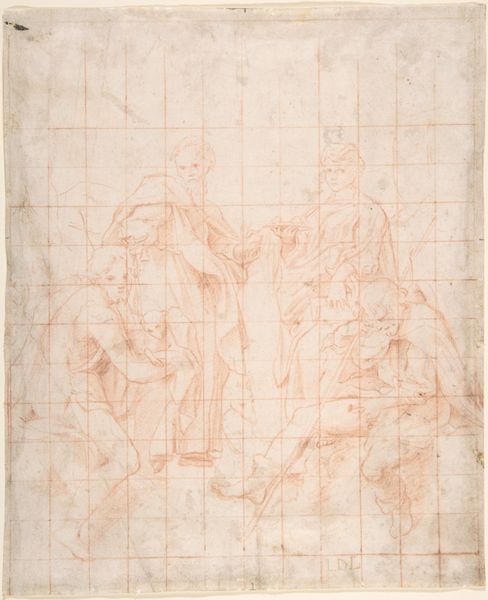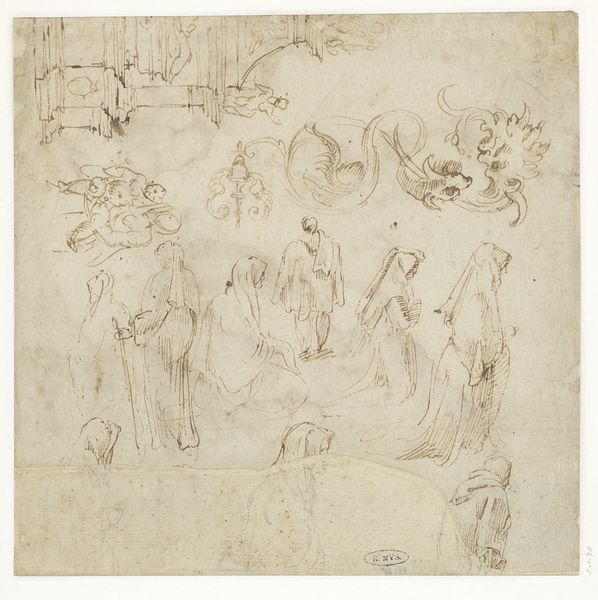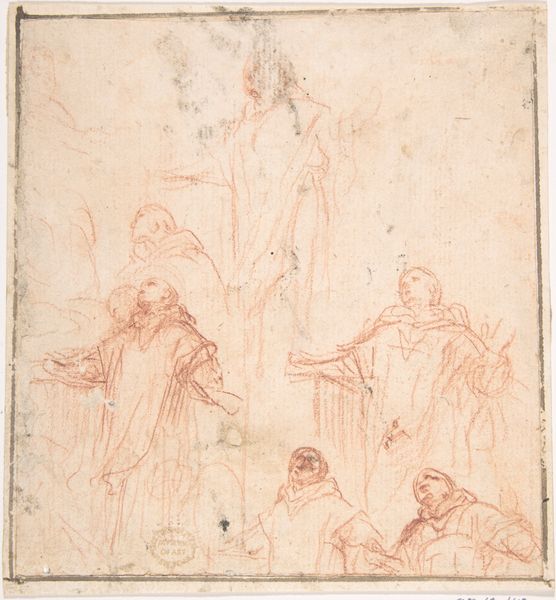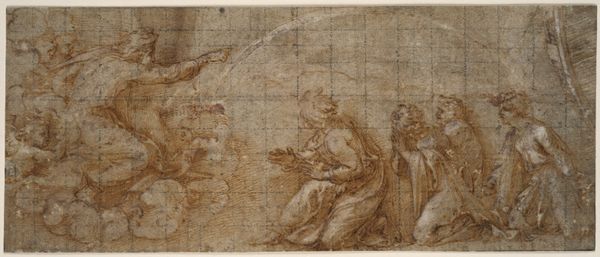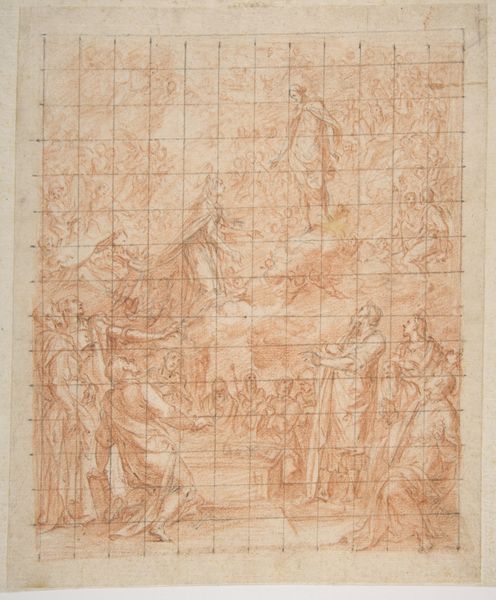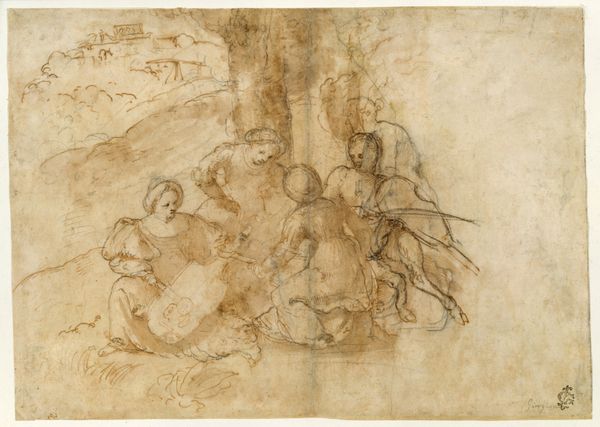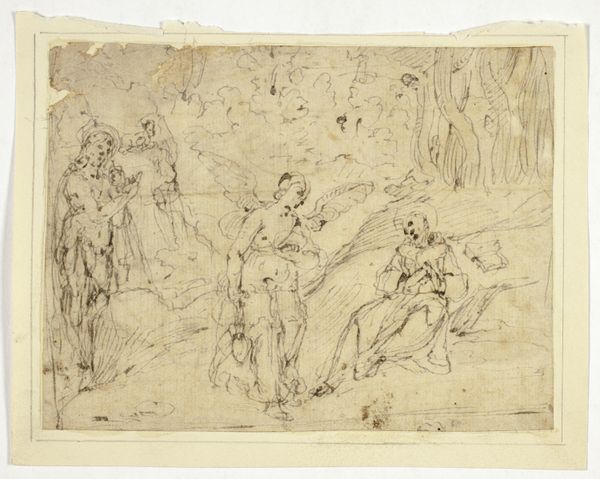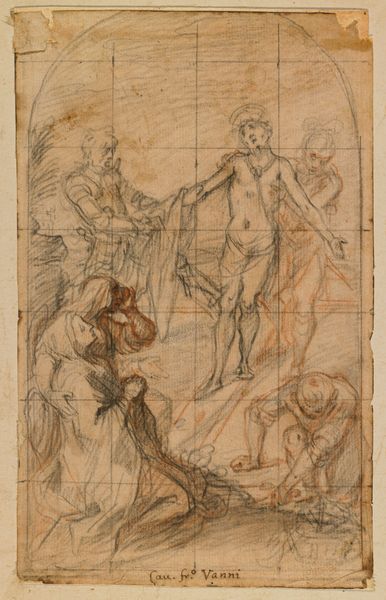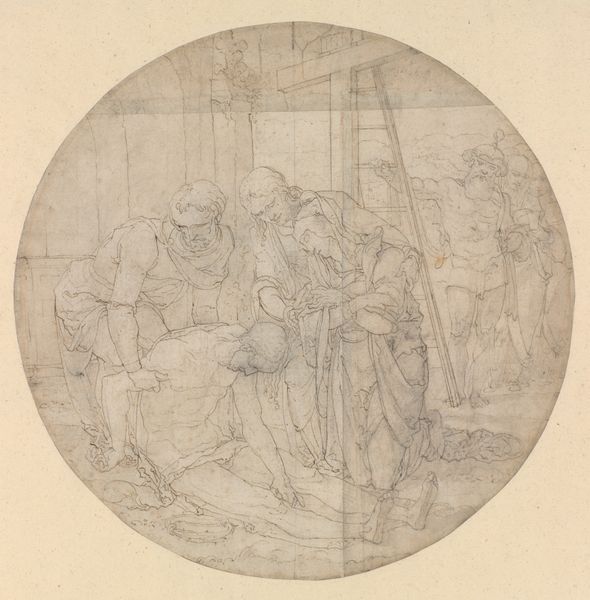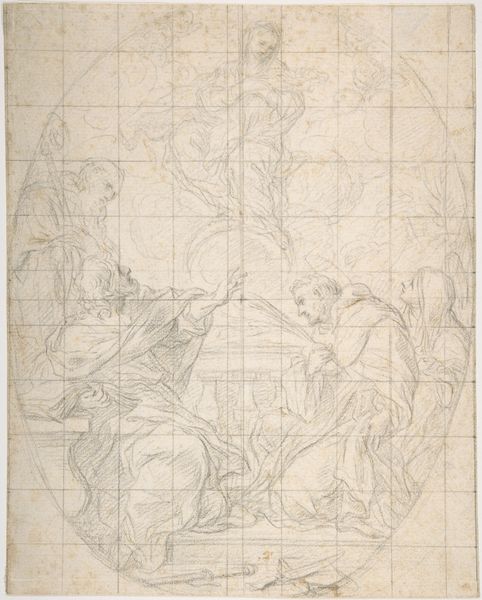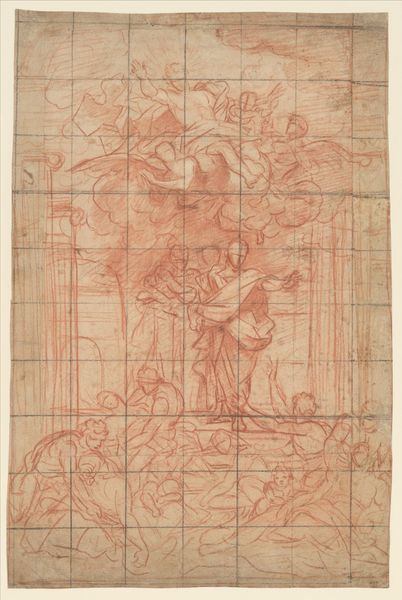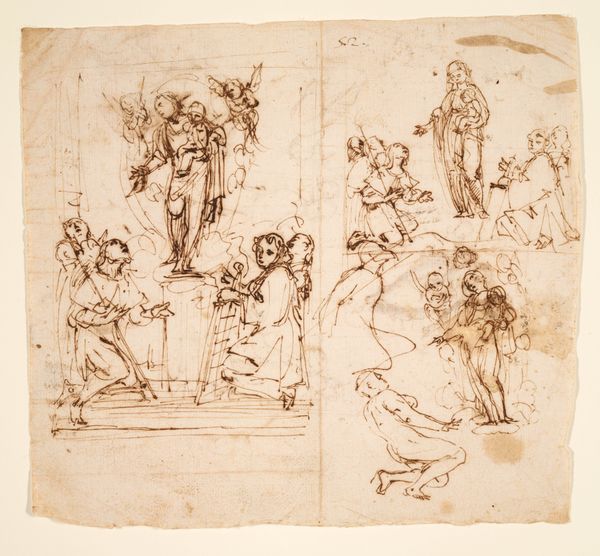
drawing, print, etching, paper, pencil
#
drawing
#
narrative-art
# print
#
etching
#
pencil sketch
#
etching
#
figuration
#
paper
#
11_renaissance
#
pencil
#
history-painting
#
watercolor
Dimensions: 190 × 199 mm
Copyright: Public Domain
Curator: We’re looking at a drawing, "The Presentation in the Temple," attributed to Girolamo da Santacroce. It’s a preparatory sketch rendered in pencil on paper, part of the Art Institute of Chicago's collection. Editor: The red chalk grid immediately jumps out. It lends a fascinating geometric tension to the figures and, although seemingly utilitarian, imparts the composition with an ethereal sense of planned harmony. It's all preliminary of course, a draft if you will, but its frankness appeals. Curator: Exactly. The grid highlights the underdrawing, exposing the labour, so to speak. The materiality of the paper itself also emphasizes this element; consider the economics of paper production in Renaissance workshops. The relatively coarse stock would be accessible. This artwork is as much about utility as aestheticism. Editor: The symbolism within the scene is so deeply rooted in tradition, of course. The Presentation itself signifies Jesus being offered to God, the fulfillment of Jewish law and custom. And look at how the light seems to focus on the child—the beacon of divinity, wouldn’t you agree? Curator: But even divinity comes from earthly material. This drawing itself becomes part of the process. Consider what kind of pigment they use and why? It’s more a question about labor than what those specific biblical connotations might mean for the patron's salvation. Editor: A rather cold, unromantic perspective. It's all quite moving, this moment. It tells a pivotal narrative that shapes culture and continues to influence cultural memory to this day. This drawing, as preparation, preserves an act of creation for the rest of us to share. Curator: The grid pattern reminds me how artists during this era relied heavily on workshops for labor and materials, so what may seem spiritual or divinely inspired comes from artisans, journeymen, apprentices. Editor: That doesn't necessarily take away from the power of visual symbolism. Santacroce employs time-honored conventions of poses and gestures. Even in a sketch like this, the iconography still carries immense weight, communicating faith, sacrifice, and hope. Curator: Point taken. And that is precisely the tension – these artistic economies don’t simply erase these concepts. Instead, they highlight the complex network of production that created and supported them. The sketch has a real power about how it captures process. Editor: The raw underdrawing opens a space for each viewer's individual and cultural relationship with faith and the biblical narrative, while yours opens the artist's social world and mode of making in early-Modern Europe. Quite remarkable, when you stop to reflect on it all.
Comments
No comments
Be the first to comment and join the conversation on the ultimate creative platform.
